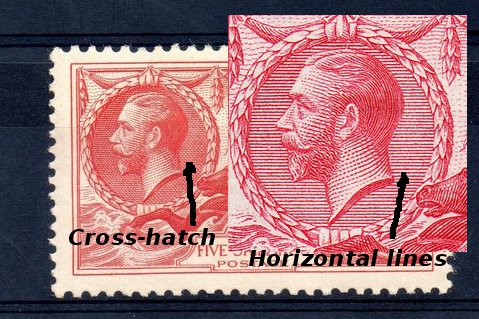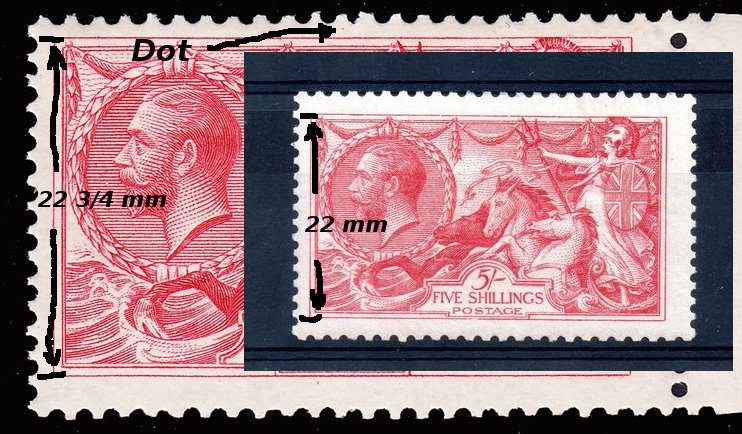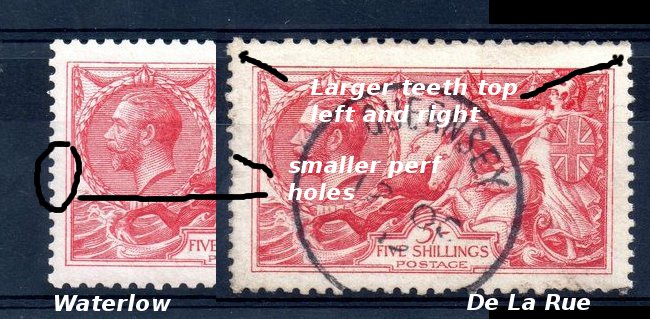

|
|
Menu
Shop for Covers
Weekly Auctions on eBay
Other stuff

SSL Certificate |
Great Britain Seahorse issues : A short tutorial
This very popular issue causes a quite a bit of confusion, but it's really quite simple to identify one from another. by Roy Lingen
This very popular issue causes a quite a bit of confusion, but it's really quite simple to identify one from another. There are four different issues (except there is only one £1 green)
 Ok, so you have horizontal lines -- could still be one of three issues. Look at this picture.  No dot? Check the vertical dimension, from outer frame-line to outer frame line. The BW stamps are 22 3/4mm. If that's yours, you have Scott #179-81 -- dot or no dot! The remaining two possibilities are only 22mm. The difference doesn't sound like much, but if you have a good perf gauge, it should have a precise millimeter scale, and the difference is obvious. These pictures are not to scale!! So your stamp is 22mm high! (It had better be at this point, or you missed something!) Still two choices -- the two earliest printings. Scott #173-176 was printed by Waterlow Brothers & Layton Printing in 1913. Scott #173a-75a was printed by De La Rue & Co. Look at this picture:  Now go to your local stamp club and be the expert! |